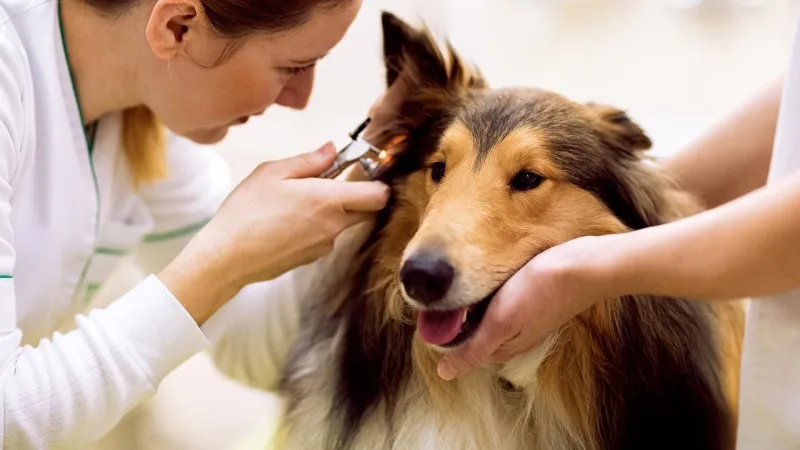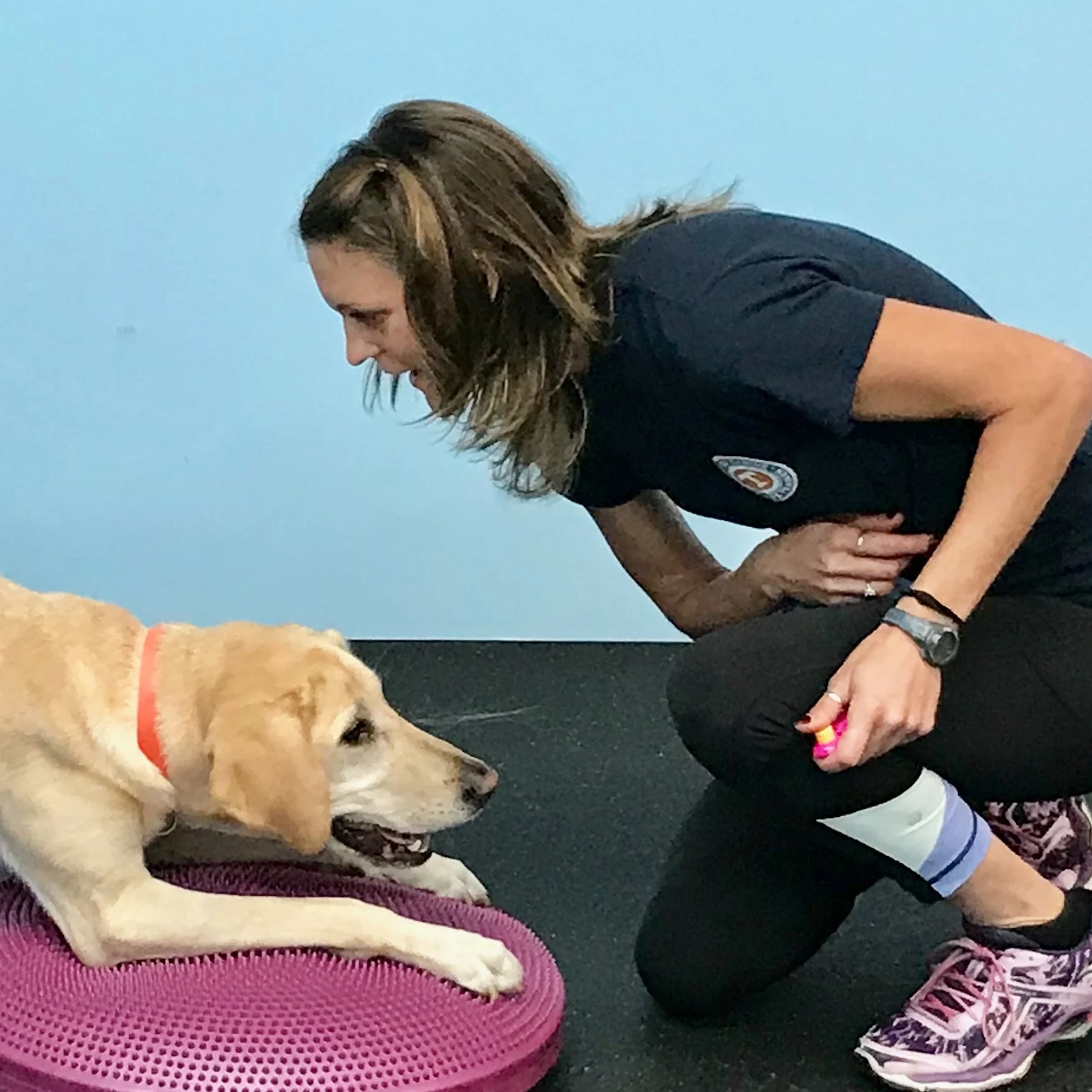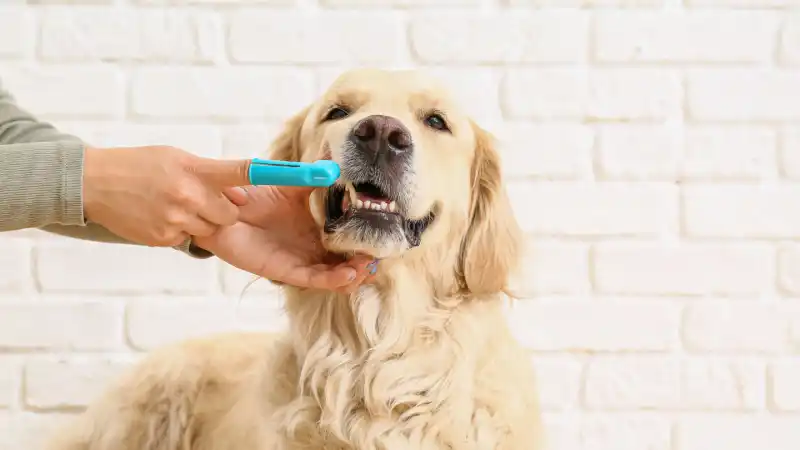Deafness in Dogs: How to Manage Hearing Loss
Deafness in dogs can develop over time or be present from birth. Learn about how to tell if a dog is deaf, how to approach one, and training tips.

Hearing Loss in Dogs
Dogs with a hearing impairment can still be trained and live amazing lives with their humans! Read on to learn when to talk to a veterinarian and how to train and safely approach a dog who has a loss of hearing.
When to See a Veterinarian
Some dogs are born completely deaf. Puppies start responding to sound when they are just ten days old. A breeder may observe that a puppy is not responding to the sounds that other puppies are noticing - squeaky toys, doorbells, vocal praise, etc. The breeder will then ask the veterinarian to check out the hearing loss concerns during one of the litter’s routine visits.
Dogs can even acquire deafness or hearing loss over time. Owners may not even notice that their dog has lost their ability to hear until there is a significant change, since the loss is gradual.
Contact your veterinarian if you observe these symptoms:
Lack of response to sounds (squeaky toys, humans talking, clapping, whistling, barking, doorbells, etc.)
Acting shocked when touched from behind, outside of their field of vision, or when touched while sleeping
Difficulty waking from sleep through speaking or other sounds
Decreased responsiveness to their own name and previously-known voice commands

Every Dog and Cat Deserves the Pet Insurance of Champions
Get prize-winning care for your pets.
How to Train a Deaf Dog
Owners of dogs with a hearing loss should work on "offered attention," meaning the owner should give treats to their dog for checking-in by turning their head toward the owner’s upper body. This check-in will become a default behavior for the dog if rewarded often.
“Attention is everything. If you don’t have the dog’s attention, you cannot train them. Deaf dogs also need to be kept in a secure area or on leash until they are reliably trained to be off-leash or check-in,” explained Mary Pollard, CPDT-KA trainer and owner of Homeschoolin’ Hounds in Raleigh, NC. If a dog with a hearing loss gets loose, the dog will not be able to hear their owner calling them to return and will be more at risk from other dangers that make noise, such as cars and other objects approaching, that could injure them.
Vibration Collars
Some owners use vibration collars to get their dog’s attention. The vibration takes the place when the dog's name is called and, after feeling the vibration, the dog should turn and look at their owner. These vibration collars are remote operated and gently vibrate.
The Deaf Dog Education Action Fund provides information regarding how to train a deaf dog with a vibration collar. Instead of just placing the collar on the dog, owners should start slowly and gradually introduce the dog to the vibrations. They should let the dog gently feel the vibration on their legs, side, and chest (while the collar is held by the owner) before having the collar placed on their neck.
Two examples of a vibration collar are the Wolfwill and the PetSafe Vibration Dog Training Collar Remote.
Physical Cues
If a dog cannot hear well, trainers and owners must utilize body language cues. Thus, hand signals will take the place of verbal signals for sit, down, come, etc. In addition, instead of using a verbal marker word (“yes,” “good,” or “nice”) or a clicker to designate that the behavior was done correctly, the owner will need to provide a hand signal, such as a thumbs up or a “starfish.” The “starfish” is a fist opening to five fingers spread-out, according to Terrie Hayward, dog trainer and author of “A Deaf Dog Joins the Family.” Get more training tips for dogs with hearing loss on the following podcast.
“Beyond the ‘getting the dog’s attention’ challenge, we often don’t give dogs enough credit, deaf or not, for their ability to pay attention to the smallest body language. In a lot of our training, our dogs aren’t paying that much attention to our words. It is more about our associated body movements, including tiny little changes in facial expression. The things we don’t even realize we are doing often offer the dog far more consistency than any of the words or signals we offer on purpose,” says CPDT-KA and CTC certified trainer Erin Bierwirth of the Charleston, SC area. Because dogs are so good at reading body language, dogs do well with only body language cues as commands.
How to Safely Approach a Deaf Dog
Owners of deaf dogs should take some special precautions for safety. It’s easier to startle a dog who cannot hear a person approaching than it is to startle a dog who can hear footsteps, crinkling clothing, and breathing.
Owners should make every effort not to surprise the dog with their presence. They should approach the dog in their range of vision - not from behind. People should be careful when waking a dog up from a deep slumber and gently shake the dog’s mat or bed instead of suddenly touching them. It’s helpful to practice shaking a dog’s bed gently and giving them treats when the dog is awake instead of while they're napping – that will minimize the disruption and give the dog a positive association (treats!) with someone gently tugging on their bed.
Owners should also educate all visitors, so that houseguests know the appropriate protocol to avoid startling the dog. Owners should also consider putting a “deaf” patch on their dog’s leash or using another indicator, such as a collar tag or bandana, to alert anyone near the dog at home or in public.
Take some of the stress out of pet ownership with Accident & Illness Coverage from AKC Pet Insurance (underwritten by Independence American Insurance Company). Our pet insurance plans are designed to be there when you need them, allowing you to focus more on the health of your pet and less on costly veterinary bills.

Every Dog and Cat Deserves the Pet Insurance of Champions
Get prize-winning care for your pets.

Jasey Day holds the Certified Canine Fitness Trainer (CCFT) credential through the University of Tennessee. She is a member of the Bobbie Lyons K9FITteam - a team of compassionate canine fitness instructors who actively teach others and continually expand their own knowledge. Since 2004, Jasey has taught a variety of workshops and classes on the following: Puppy, Canine Good Citizen/Family Pet, Advanced Family Pet, Canine Fitness, Canine Swimming, Rally, and Agility. In addition, Jasey has earned over 60 titles in Dock Diving, Agility, Rally, CGC and Trick Dog. Jasey has worked full time for the American Kennel Club since 2007 and teaches at Care First Animal Hospital in Raleigh, NC. Jasey’s Labrador Retrievers spend their free time hiking, training, and snuggling with Jasey.
READ MORE ARTICLES

